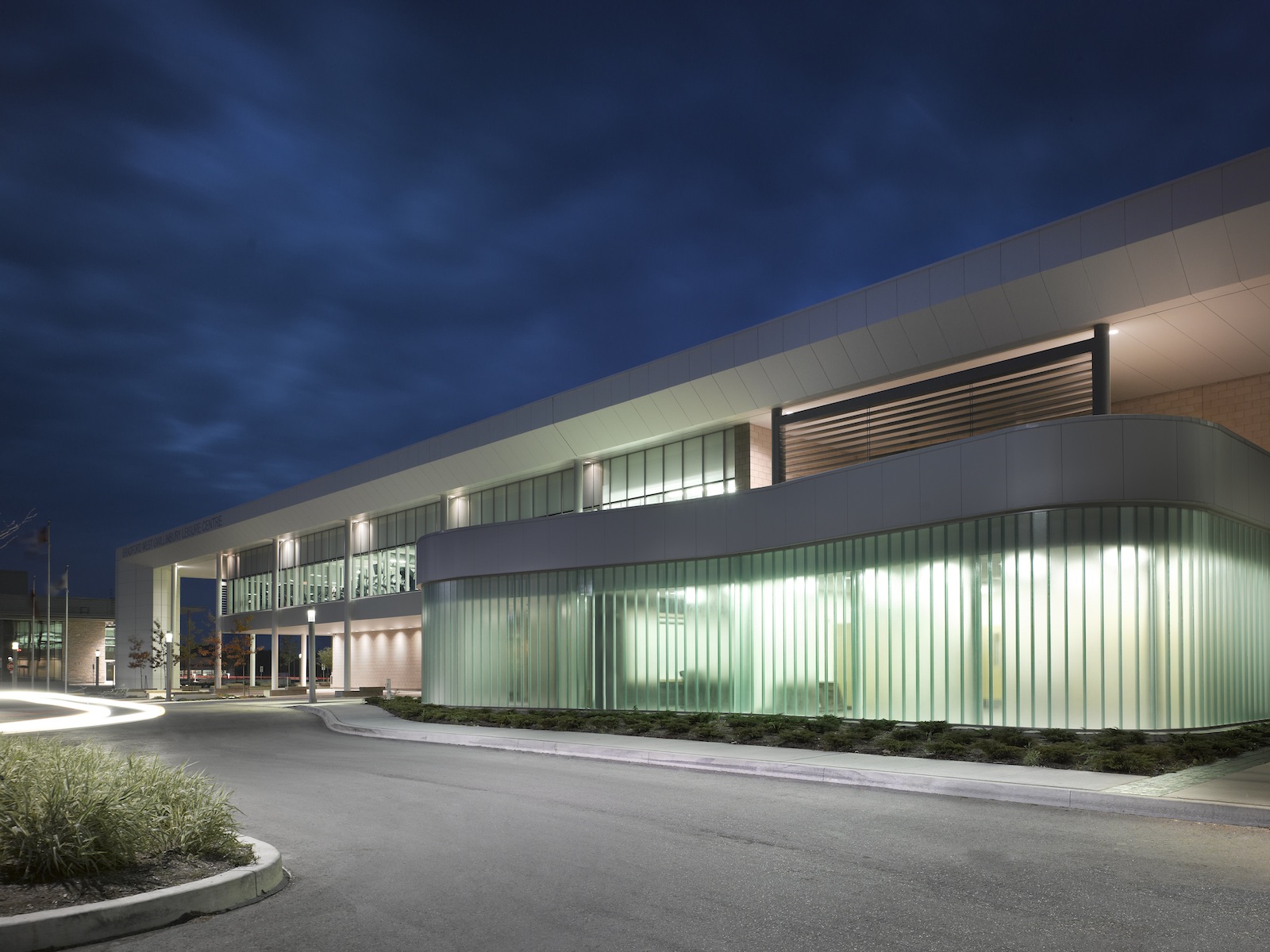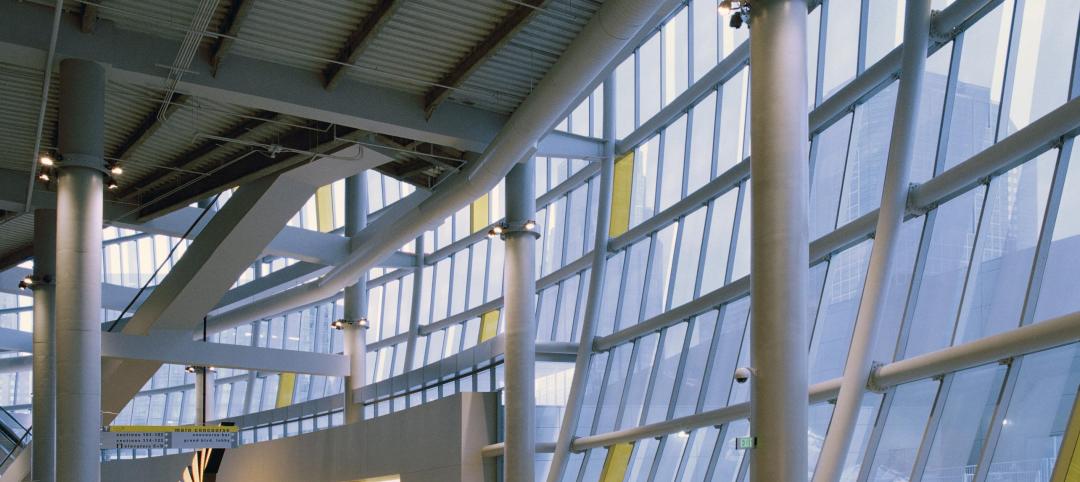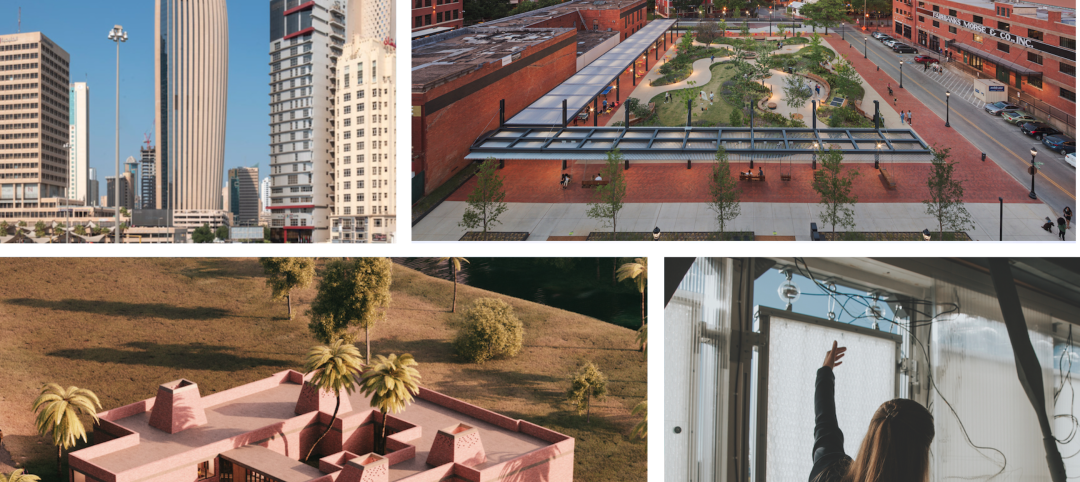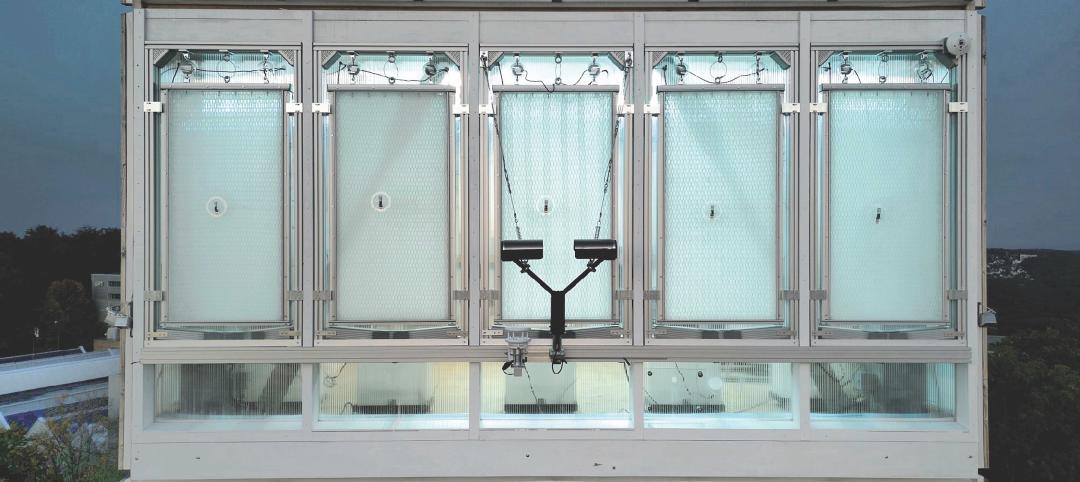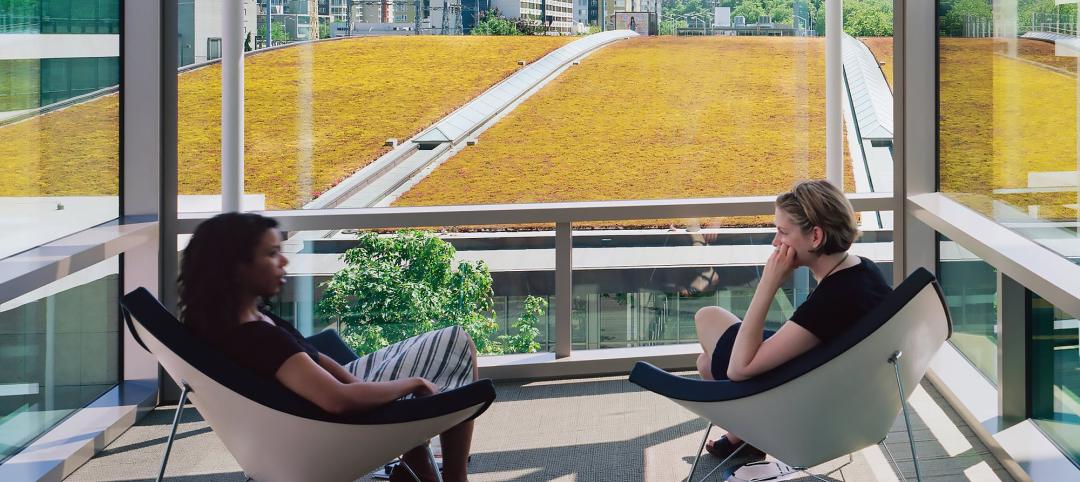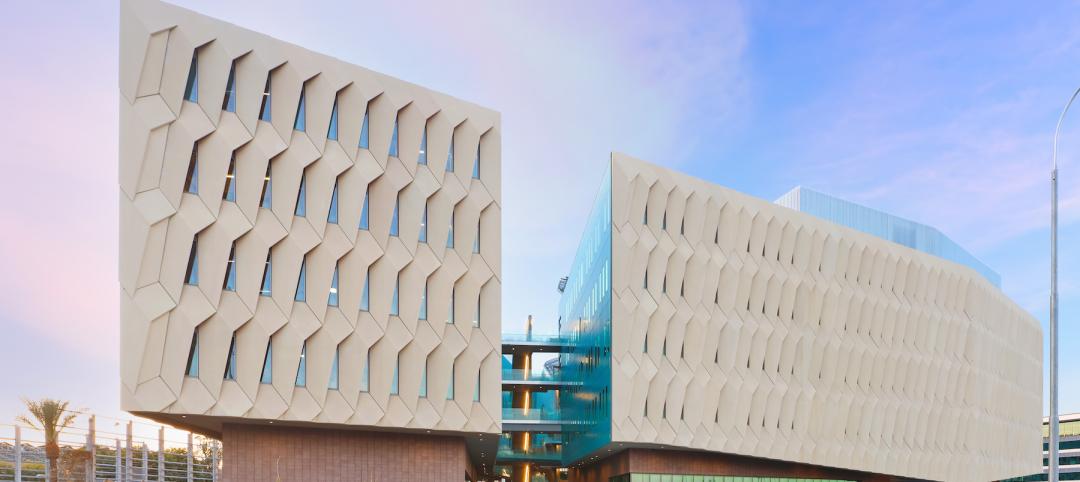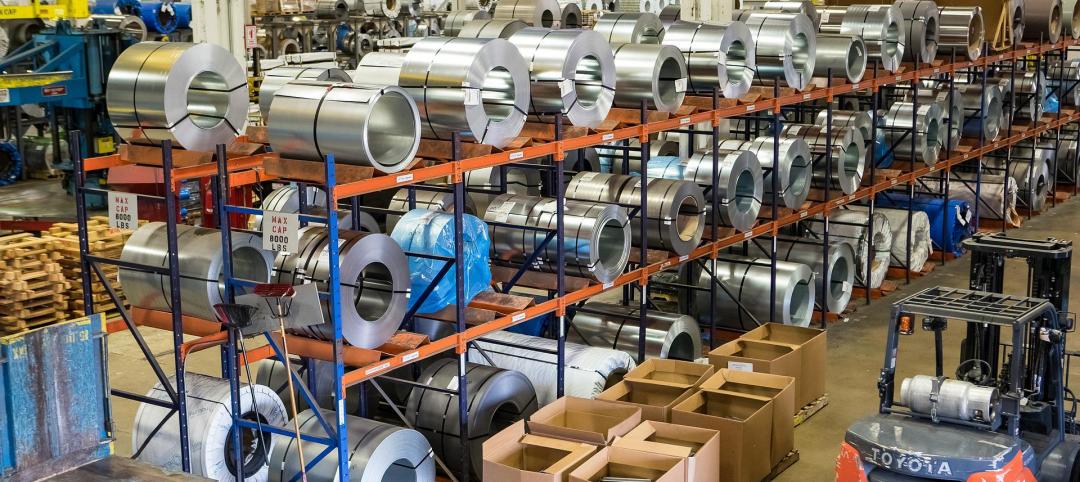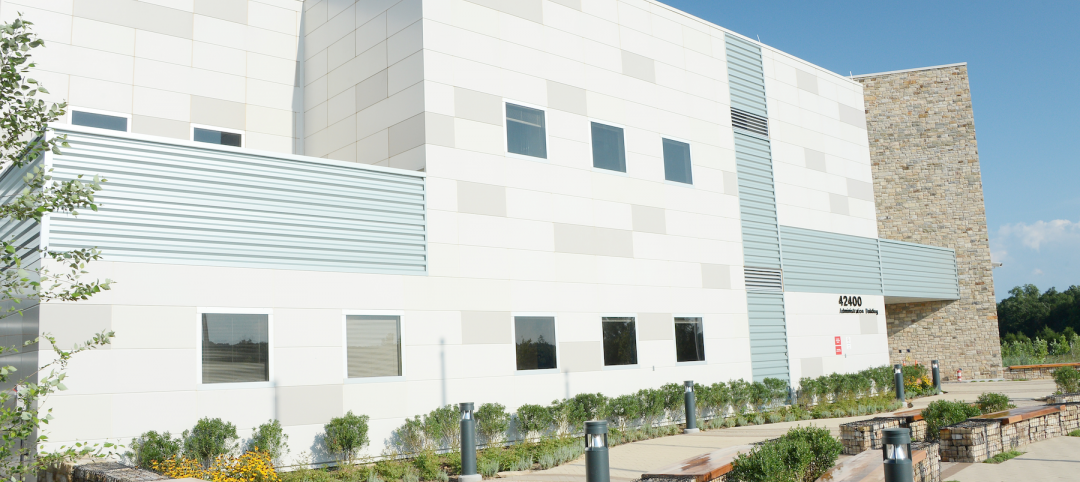Project: Bradford West Gwillimbury Leisure Centre
Location: Ontario, Canada
Architect: Salter Pilon Architecture in association with Lett Architects
Glazing Contractor: Aeroloc Industries
Channel Glass Supplier: Technical Glass Products
Glass Style: Pilkington Profilit™ channel glass; low-e tempered Pilkington Profilit channel glass
Ontario's new Bradford West Gwillimbury Leisure Centre, designed by Salter Pilon Architecture, is one of the largest multi-use recreation facilities in the province. However, it does more than foster a healthy lifestyle through recreational and cultural activities. Its 1,400-sf serpentine channel glass wall delivers dramatic visual appeal for residents—one of the town's three core visions for the new facility.
To create the curving glass façade, the design team turned to Pilkington Profilit™ channel glass. Unlike conventional windows and glass block, its slender frames and narrow channel glass segments allow for tight radii—as low as 1.9 meters (78 in.). While this flexibility enabled the design team to create a serpentine configuration, one technical challenge was ensuring a homogenous appearance in areas of the facade with different radii. Channel glass segments tangent to one another flow smoothly into adjacent curves or straight sections. Creating a seamless transition is more complex where different radii prevent tangent segments.
To ensure the U-shaped channel glass system did not interfere with the joint connection and interrupt the channel glass wall’s uniform look, flanged L-shaped channel glass planks were installed on one side of the joint transition and full U-shaped channel glass planks on the opposing side. This configuration allowed the channel glass framing head and sill components to be stretch-formed into a smooth continuous structure with a precise radius.
The serpentine channel glass application is formed of a mixture of standard cast glass and clear channel glass. The standard cast glass diffuses light through its textured surface while also obscuring vision. Clear cast glass adds a second layer of visual interest and provides occupants with greater access to daylight and views to nature. This glazing combination helps the system meet the different light transfer, privacy and visibility needs of the various rooms it encloses. A low-emissivity coating further boosts the façade’s thermal performance.
The completed façade flanks the Bradford West Gwillimbury Leisure Centre’s east exterior wall. It breaks up the building’s rectangular shape and serves as a surround for a lobby, meeting room and multipurpose room. By day it transmits light into the leisure centre’s interior rooms. By night, its backlit form helps welcome people inside.
TGP’s Pilkington Profilit channel glass soars up to 23 feet, can be installed vertically or horizontally, and formed into straight or curved walls. It is available in a variety of textures and colors with varying degrees of translucency, allowing light through while maintaining privacy. Pilkington Profilit can be used in interior or exterior applications, with insulating Lumira® aerogel for superior energy efficiency.
For more information on Pilkington Profilit channel glass, along with TGP’s other specialty architectural glazing materials, visit www.tgpamerica.com.
Technical Glass Products
800.426.0279
800.451.9857 – fax
sales@fireglass.com
www.fireglass.com
Related Stories
Cladding and Facade Systems | Jun 5, 2023
27 important questions about façade leakage
Walter P Moore’s Darek Brandt discusses the key questions building owners and property managers should be asking to determine the health of their building's façade.
Sponsored | Building Enclosure Systems | May 16, 2023
4 steps to a better building enclosure
Dividing the outside environment from the interior, the building enclosure is one of the most important parts of the structure. The enclosure not only defines the building’s aesthetic, but also protects occupants from the elements and facilitates a comfortable, controlled climate. With dozens of components comprising the exterior assemblies, from foundation to cladding to roof, figuring out which concerns to address first can be daunting.
Design Innovation Report | Apr 27, 2023
BD+C's 2023 Design Innovation Report
Building Design+Construction’s Design Innovation Report presents projects, spaces, and initiatives—and the AEC professionals behind them—that push the boundaries of building design. This year, we feature four novel projects and one building science innovation.
Cladding and Facade Systems | Apr 5, 2023
Façade innovation: University of Stuttgart tests a ‘saturated building skin’ for lessening heat islands
HydroSKIN is a façade made with textiles that stores rainwater and uses it later to cool hot building exteriors. The façade innovation consists of an external, multilayered 3D textile that acts as a water collector and evaporator.
Mechanical Systems | Jan 17, 2023
Why the auto industry is key to designing healthier, more comfortable buildings
Peter Alspach of NBBJ shares how workplaces can benefit from a few automotive industry techniques.
Sponsored | Resiliency | Dec 14, 2022
Flood protection: What building owners need to know to protect their properties
This course from Walter P Moore examines numerous flood protection approaches and building owner needs before delving into the flood protection process. Determining the flood resilience of a property can provide a good understanding of risk associated costs.
Sponsored | BD+C University Course | Aug 24, 2022
Solutions for cladding performance and supply issues
This course covers design considerations and cladding assembly choices for creating high-performance building envelopes — a crucial element in healthy, energy-efficient buildings.
Sponsored | | Aug 4, 2022
Brighter vistas: Next-gen tools drive sustainability toward net zero line
New technologies, innovations, and tools are opening doors for building teams interested in better and more socially responsible design.
Building Materials | Jun 20, 2022
Early-stage procurement: The next evolution of the construction supply chain
Austin Commercial’s Jason Earnhardt explains why supply chain issues for the construction industry are not going to go away and how developers and owners can get ahead of project roadblocks.
Sponsored | BD+C University Course | May 5, 2022
Designing with architectural insulated metal wall panels
Insulated metal wall panels (IMPs) offer a sleek, modern, and lightweight envelope system that is highly customizable. This continuing education course explores the characteristics of insulated metal wall panels, including how they can offer a six-in-one design solution. Discussions also include design options, installation processes, code compliance, sustainability, and available warranties.


